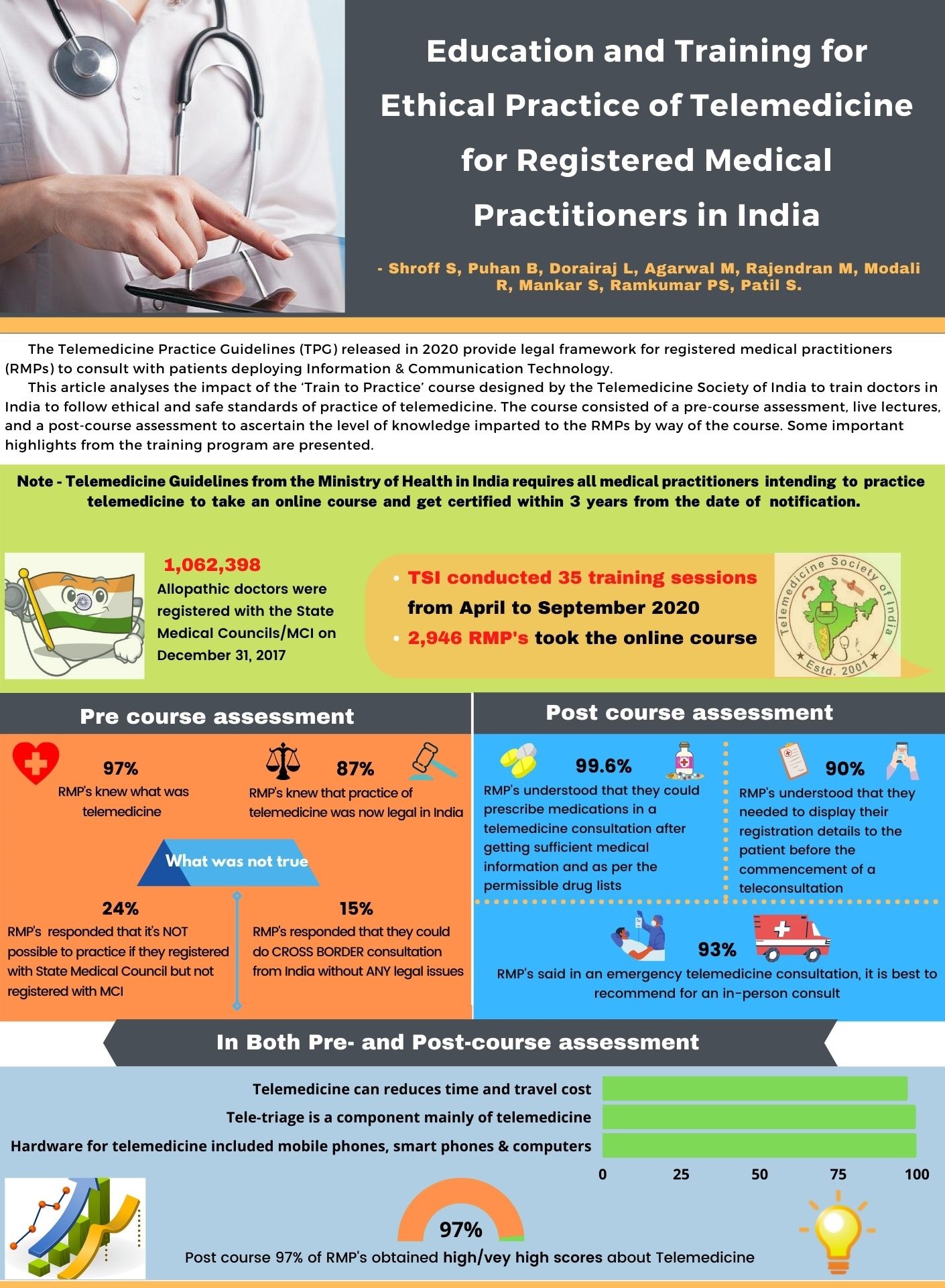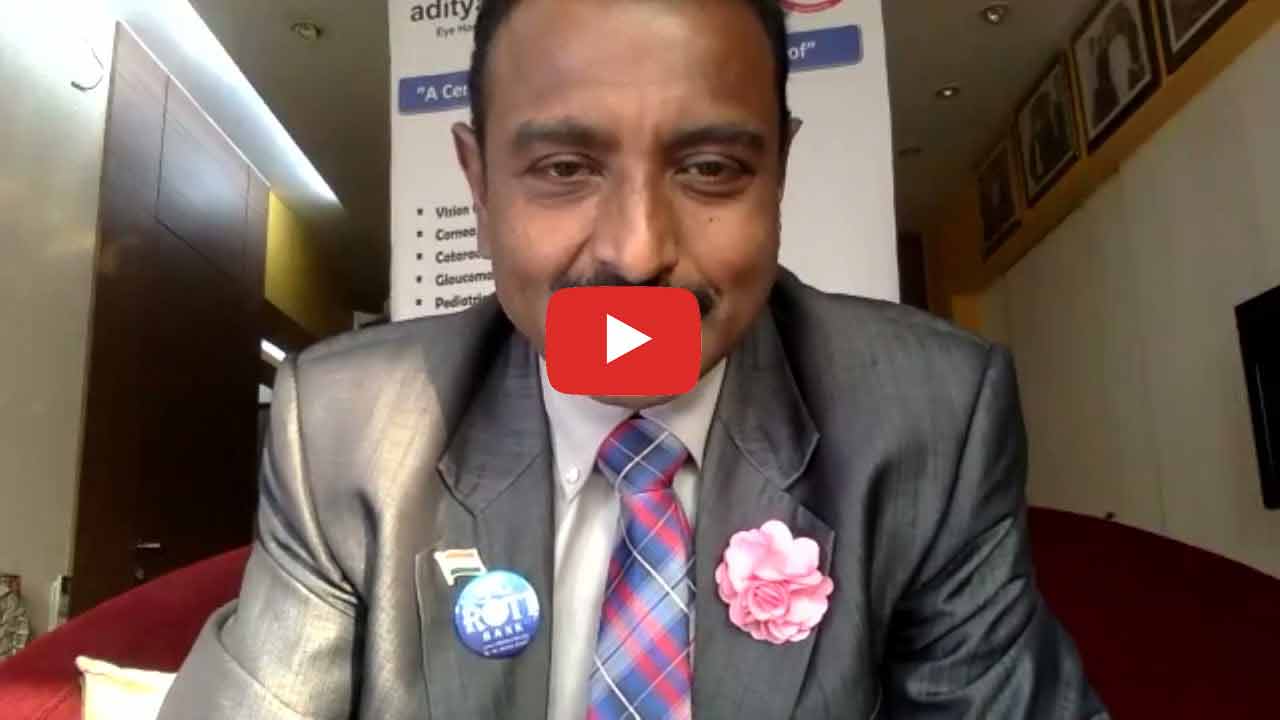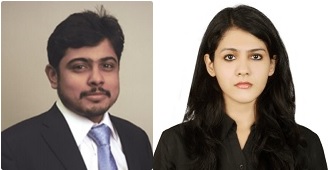Click Here to Download PDF Version

Telehealth Newsletter
Official Newsletter of Tamil Nadu Chapter of Telemedicine Society of India
|
What is New? I am pleased to inform you about the online telemedicine course from TSI for the RMPs. This self-learning course with live interaction with the course faculty became operational this month. The course is called ‘Train to Practise Telemedicine’ and is housed on the learning management platform called MOODLE. In the near future ‘Telehealth speciality courses’ will also be developed. Please visit https://tsi.org.in/courses to view all the courses. If you wish to contribute as a TSI member you are most welcome to join us in development and delivery of these courses. With the May Newsletter there are two additional features being introduced: 1.With this issue we are introducing visual abstracts and articles to make the newsletter more appealing and easy to read. 2.We have also introduced a new medico-legal digital health section and welcome contributions in this area. Mr. Anay Shukla from Arogaya Legal has agreed to contribute a short article for the next few issues. Thank You. |
Publication of TELEMEDCION2020 Abstracts and Select Articles in ‘Telehealth and Medicine Today’ Journal
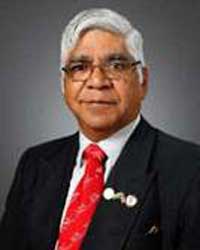 Prof. K. Ganapathy
Prof. K. Ganapathy
Guest Editor, Special issue on TELEMEDCION2020 in ‘Telehealth and Medicine Today’ Journal
Past President, Telemedicine Society of India & Neurological Society of India | Hon Distinguished Professor Tamilnadu Dr. MGR Medical University | Director Apollo Telemedicine Networking Foundation & Apollo Tele Health Services
The 16th International Annual Conference of the ‘Telemedicine Society of India’ (https://telemedicon2020.com/) was held virtually from 18th to 20th December, 2020.
The Tamil Nadu chapter of TSI under the leadership of Prof. Sunil Shroff, Organising Secretary along with four other TSI state chapters – Delhi-NCR, Rajasthan, Maharashtra and Karnataka organised this conference as a semi emergency, within 8 weeks. For the first time in two decades abstracts of papers presented have been published in a special issue of a US based journal Telehealth and Medicine Today https://telehealthandmedicinetoday.com/index.php/journal/issue/view/20
This is in addition to the full text of nine papers presented at the conference (peer reviewed) besides two editorials.
John F. Kennedy in his inaugural address on 20th January 1961 remarked “ ……all this will not be finished in the first one hundred days. Nor will it be finished in the first one thousand days, not in the life of this Administration, nor even perhaps in our lifetime on this planet. But let it never be said that a beginning was not made “. I am much more optimistic. This optimism comes from the actions of my teacher Prof B. Ramamurthi. In the year 1951 four young men, driven by a passionate vision conceptualised, created and constituted India’s first ever neurological society. Dr. Jacob Chandy, Dr. B. Ramamurthi, Dr. S.T. Narasimhan and Dr. Baldev Singh brought all the disciplines associated with the science of neurology under one roof. The NSI was born. The four founding members were all office bearers !! This was audacity at its highest.
Within a year in March 1952, the society had its first meeting in Hyderabad, with 30 members from all over the country. The first presidential address was aptly titled “Neurology Comes To Life”. It was at this meeting the society decided to publish its own journal Neurology India. Today 69 years later Neurology India is a globally recognised journal with thousands of citations and 20% overseas contributions.
The world in April 2021 has turned upside down. If a journal could be started in 1952 in a then developing country in an unknown super speciality in the BC ( pun intended !) era with 30 individuals in the whole of India, I fail to see why we cannot start our own journal. Future Ready Next Generation Sequencing is now available across genetics labs in the country. It is time that the NG of Telehealth enthusiasts with access to all the resources in this planet step in and take over. Septuagenarians have shown the way.. “ Lead kindly light, lead thou me on, I do not ask to see the distant scene. One step enough for me” Saint John Henry Newman could very well have been referring to the Founding editors of TSI’s first journal.
I would like to once again place on record our thanks to the EC of the TSI to permit this exercise and also to Tory Cenaj and Prof Amar Gupta of Telehealth and Medicine Today for the unstinted support extended. HAPPY READING of the Special issue https://telehealthandmedicinetoday.com/index.php/journal/issue/view/20
Tele Ophthalmology Society of India – Launch Webinar on 1st May 2021
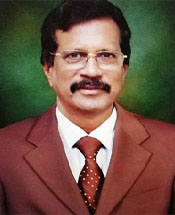 Dr. BNR Subudhi
Dr. BNR Subudhi
I am happy to inform you that the Launching of Tele Ophthalmology Society of India was held on 4th April 2021 in Presence of President and Secretary of AIOS, President of Telemedicine Society of India and few international dignitaries working in the field of Teleophthalmology.
Padmashree Awardee Prof. S. Natarajan of Mumbai is the President of the Society I am the Hony Secretary, Dr. S. Pattanayak is the Treasurer and eminent Ophthalmologists of the country like Dr. R. Kim is the President elect, Dr. Rajeev Raman is the Vice President and Dr. Sheila John, Dr. Senthil, Dr. Abhesek, Dr. Ashok Nanda, Dr. Kavita Rao and Dr. Sandipak Ray are the executive members nominated to carry forward the objects of the Society which is primarily to provide Ophthalmic services to the needy rural and underprivileged people through tele consultation utilising digital technology, block chain and artificial intelligence.
As an initial step we have started collaboration with ECHO India, an organisation sharing their digital platform for Organising meeting, education, tele consultation facilities etc.
The first virtual Symposium of TOSI was organized on 1st May 2021 with Mr. Boman Irani, the Bollywood artist as the Chief Guest and other speakers from different fields of telemedicine and tele Ophthalmology like Dr. SB Gogia, Dr. K. Ganapathy of Apollo Telemedicine network, Dr. Sunil Shroff from Telemedicine Society of India, Dr. Ganesh Joshi from CRC Bhopal, Dr. Padmaja Rani from LV Prasad Eye Institute Telemedicine network and others. This gave us tremendous insight about planning ahead for the spread of Teleophthalmology systematically.
We have decided to have one monthly virtual symposium during this COVID time to interact with the members and the other stalwarts and Institutions and industry representatives to plan ahead for the members to reach the people through digital technology to prevent blindness.
The goal of Tele ophthalmology is to decrease the global burden of vision threatening diseases and improve the quality of life for patients worldwide. It will provide high quality, cost effective community eye care at the door steps of the community.
TAKING YOUR PRACTICE ONLINE (PART 1): LEGAL COMPLIANCES AND GOOD PRACTICES
Anay Shukla
Founding Partner, Arogya Legal – Health Laws Specialist
Eshika Phadke
Associate, Arogya Legal – Health Laws Specialist Law Firm
During the COVID-19 pandemic, telemedicine has proven itself to be a perfectly legal, effective and safe way for doctors to connect and consult with their patients.
However, before initiating a consultation over a phone call, email or through a mobile app with a patient, it is important that doctors familiarize themselves with the legal framework within which telemedicine can be safely practiced. In this article, we have enumerated key things to be kept in mind by doctors before they take their practice online-
Medical Council Registration. While a doctor does not need to be registered in every State where his or her patients are located for practicing telemedicine, a doctor still needs to have a valid registration with the medical council of the State in which he or she resides and practices.
Familiarity with Treatment Guidelines Every doctor must familiarize himself or herself with telemedicine-specific treatment guidelines applicable to his or her specialty. If no such guideline exists for a speciality in India, a doctor may refer to international guidelines that are easily available on the internet.
Exercising Professional Judgement with Caution. No guideline can substitute a doctor’s own professional judgement to treat his or her patient. However, as a thumb rule, it may be pragmatic to err on the side of caution while offering remote consultation given the lack of physical access to the patient.
Limitations of Technology and Communication Medium. A doctor should always be conscious of the limitations of today’ technology and the medium of communication – mobile network, WiFi, internet speed, camera quality, audio, video, text, email, etc. and should offer his or her services virtually with full awareness of these limitations. It is not wrong on the part of a Doctor to request his or her patient to switch to a different teleconsultation medium or an in-person visit, if the doctor desires so in the interest his or her patient’s health.
Maintaining Patient Privacy. A doctor’s virtual clinic should be conducive to maintaining the patient’s privacy, just like his or her actual clinic. As a good practice, a doctor should also ensure that his or her patient is present in a comfortable surrounding from which the patient can have an open discussion.
Identifying Oneself to the Patient. As in physical consultation, a patient should be able to verify a doctor’s credentials and contact details in a remote consultation. If the teleconsultation is through a reliable teleconsultation App, the App will most likely display the doctor’s name, registration number, qualifications and contact information. However, if a doctor is consulting through WhatsApp, email, videoconferencing service etc., he or she should consciously display his or her registration number and name. In cases where the doctor and patient are unknown to each other, it is expected that the doctor will introduce himself or herself along with his or her qualifications to a patient, and also confirm the patient’s identity by asking the patient’s name, age, and contact information. A doctor has the legal right to request that the patient displays/shares a proof of identity with the doctor before the start of consultation, if necessary.
Maintaining Records. Before venturing into telemedicine, every doctor should establish a process to maintain and preserve records electronically. For instance, a log book for each interaction with patient should be maintained. A record of patient history, diagnosis, prognosis and prescriptions issued, if any, should also be maintained. The patient’s consent for the consultation should also be recorded, if the patient has not initiated the consultation. It is a good practice to maintain these records for a minimum period of three years.
Prescriptions. A prescription generated in course of a telemedicine consultation should not be different from a physical consultation, and should contain all information as is associated with a prescription generated during a regular consultation (for example, patient identifiers, patient history, date of consultation, provisional diagnosis, investigations recommended, medicines prescribed etc.). The prescription may be handwritten or digital, but it should be signed by the doctors, preferably by hand.
Insurance. As a safeguard against consumer complaint or legal liability, doctors who offer remote consultations should ensure that they have purchased a professional indemnity policy that either explicitly covers teleconsultations, or does not explicitly exclude it. This is not to imply that telemedicine may result in a legal issue. It’s just one less thing to worry about!
Reference:
Telemedicine Practice Guidelines
NEXT TOPIC- TAKING YOUR PRACTICE ONLINE (PART 2): LEGAL ISSUES AND CHALLENGES
Space Travel and Telemedicine (History and Evolution of Telemedicine – 7th Milestone)
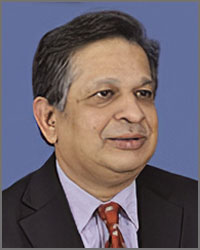
Dr. Sunil Shroff, MS, FRCS, Dip. Urol (Lond.)
President, Tamil Nadu Telemedicine Society of India,
Editor, www.medindia.net,
Consultant Urologist & Transplant Surgeon, Madras Medical Mission Hospital, Chennai, India (shroffmed@gmail.com).
As space travel became a reality, scientists were curious in the 1960s to find out if the human body could function adequately in outer space or not. And this brought NASA contributing to the growth of telemedicine in 1960s. They first sent animals into space who were connected to medical monitoring systems and their biometric data was transmitted back via a telemetric link.
NASA soon established an Integrated Medical and Behavioral Laboratories and Measurement Systems (IBLMS) to study changes in human physiology in outer space with zero gravity and its effects on human body.

The report described the objective of this centre as – “..It was meant to develop a system that could acquire, display, analyze and record, “…a wide variety of medical, biochemical, microbiological, and behavioral, measurements and experiments designed to study in detail man’s well being and operational capability.
NASA also launched a program, called the Space Technology Applied to Rural Papago Advanced Health Care (STARPAHC). It leveraged the remote monitoring technology that they had developed for space travel to serve terrestrial, rural populations.
The project was conducted on the Papago Indian reservation in Arizona. It evaluated the practicality and efficacy of a large-scale telemedicine operation. This truly gave a new spin to telemedicine for ‘reaching the unreached population to provide healthcare.’
Telemedicine – News from India & Abroad
India
Need to take telemedicine to villages: PM
In an interaction with doctors on Monday, PM Narendra Modi drew attention to the importance of telemedicine, how it has played a big role for patients in home isolation and asserted that it needs to be expanded in rural areas as well. The PM also urged doctors to include oxygen audits in their daily routine.….. Read More
80% diseases can be nipped with primary healthcare
Healthcare workers, across country, with constant training, have the potential to de-clog and reset the healthcare system. Data Driven Decisions and support for carrying out their tasks should be one of the priority.….. Read More
International
Mental health chatbots might do better when they don’t try to act human
Digital mental health platforms have seen something of a renaissance during the Covid-19 pandemic, as in-person appointments have been relegated to the digital sphere. For those who cannot access therapy from a human clinician, mental health chatbot platforms are an increasingly popular digital alternative…….. Read More
TN – TSI invites all the TSI Chapters and Members to submit information on their upcoming Webinar or Events (50 words), News related to Telemedicine (200 words) or short articles (500 words) for the monthly e-newsletter.Guidelines for submission to TN TSI Newsletter-
|
Submission may be sent to – tsigrouptn@gmail.com
Editors reserve the rights for accepting and publishing any submitted material.
Editor in Chief – Dr. Sunil Shroff
Editors – Dr. Senthil Tamilarasan & Dr. Sheila John
Technical Partner- www.medindia.net

